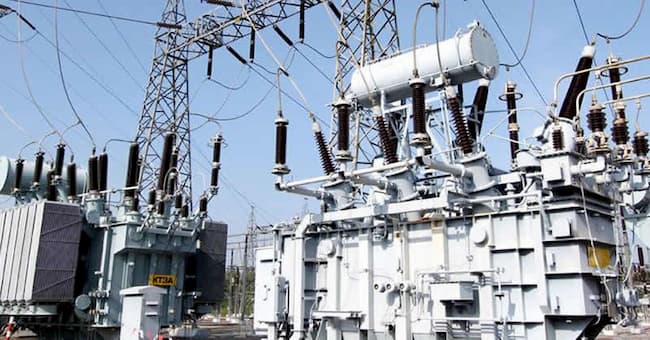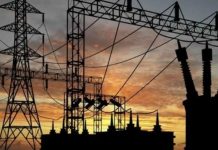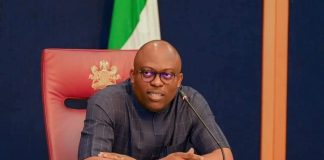Due to a rise in the electricity tariff shortfall, also known as the subsidy, electricity customers on Band A feeders may need to prepare for a potential tariff increase. Reports indicate that the electricity subsidy paid by the Federal Government surged up from N102.30 billion in May, to N181.63 billion in September.
In April, when the Nigerian Electricity Regulatory Commission announced the removal of subsidies in areas categorized as Band A feeders, the subsidy stood at N140.7 billion.
The government stopped paying subsidies for Band A customers, who receive a minimum of 20 hours of electricity daily, raising their tariff to N225 per kilowatt-hour, to maintain liquidity in the sector.
This decision sparked outcry among Nigerians, including labor unions and educational and health institutions, whose electricity bills tripled following the subsidy removal.
In May, when the subsidy amount dropped to N102.30 billion, the government reduced the Band A tariff to N206.80 per kilowatt-hour. However, the tariff was jerked to N209/kWh in early July as the subsidy rose again to N158bn in June.
According to data released by the NERC, the subsidy rose to N163.87bn in July, N173.88bn in August, and N181.63bn in September, fuelling speculations that there may be another tariff increase in the October Multi-Year Tariff Order unless the cost of power generation drops.
Reports state that the foreign exchange crisis has been the major driver of the electricity subsidy.
The Nigerian Electricity Regulatory Commission (NERC) set the dollar exchange rate at N1,494.1 in July, N1,564.3 in August, and N1,601.5 in September. According to the regulator, the dollar rate and inflation are key determinants of power production costs.
In its Multi-Year Tariff Order (MYTO) for September, NERC stated that, according to Section 23 of MYTO-2024, the supplementary orders reflect changes in pass-through indices beyond the control of licensees. These indices include inflation rates, the naira/dollar exchange rate, available generation capacity, and gas prices, all of which determine cost-reflective tariffs.
The naira to the US dollar exchange rate of N1,601.50 was adopted for September. The Nigerian inflation rate of 33.40% for July 2024, as published by the National Bureau of Statistics, was used to revise the inflation rate projection for 2024. Meanwhile, the US inflation rate of 2.90% for July 2024 was applied to update the US inflation rate projection for 2024.
As of September, NERC maintains the benchmark gas-to-power price at $2.42/MMBTU, based on the established benchmark price set by the Nigerian Midstream and Downstream Petroleum Regulatory Authority, in line with Section 167 of the Petroleum Industry Act 2021.
The cost of power generation is also impacted by contracted gas supply and transportation prices beyond the domestic gas delivery obligation quantities, based on effective gas sale agreements approved by the commission.
When the commission reduced the Band A tariff to N206/KWh in May, its spokesperson, Usman Arabi, told our correspondent that the reduction was due to the naira appreciation in the foreign exchange market.
Despite the rise in the cost of power generation, observations prove that the Federal Government has yet to approve another tariff hike, perhaps due to the current economic hardship in the country, especially with the rise in the cost of premium motor spirit otherwise known as petrol.
For example, in the Abuja Electricity Distribution Company, the commission said the energy delivered was 611 megawatt-hours per hour in April. The same was delivered from May to September.
While the generation cost was N103.9 per kilowatt-hour in April, it dropped to N87.33/KWh in May and rose to N113.69/KWh in September.
The AEDC had a transmission and admin cost of N9.1/kWh in April, N8.9/kWh in May and N9.8/kWh in June. It is N10.4 in September.
It was gathered from the NERC data that the end-user cost-reflective tariff in AEDC was N185/kWh in July; N192.2/kWh in August and N195.5/kWh in September.
Similarly, the end-user allowed tariff was N117.31/kWh in the three months, indicating that despite the rise in the cost of power generation, the NERC pegged the allowed tariffs at the same rate in July, August, and September.
However, reports state that the Discos are already complaining over the non-cost-reflective tariffs.
Some of them are currently refusing to off-take electricity allocated to them from the grid, demanding that subsidies be removed in all bands.
A top official of one of the Discos had said that the power companies were finding it difficult to pick the extra energy produced by generation companies because they were not happy with the tariff on other bands apart from Band A.
“As it is now, we are operating at a loss. Yes, they supply more power but this problem could be solved with improved tariff for the other bands and more meter penetration to recover the cost,” the Disco official, who pleaded not to be named due to lack of authorisation to speak on the matter, said.
Adebayo Adelabu, the Minister of Power, recently criticized the rejection of power by electricity distribution companies, describing it as regrettable.
According to the minister, generation recently peaked above 5,000 megawatts, but “unfortunately, it had to be ramped down by 1,400MW due to the inability of the Discos to pick the supply.”
Adelabu while lamenting about the situation said, “This is really regrettable considering that the government is on course to increase generation to 6,000MW by the end of the year.”
He urged power distribution companies to take more energy to prevent grid collapse, explaining that the grid’s frequency drops when power is produced but not picked up by the Discos.













